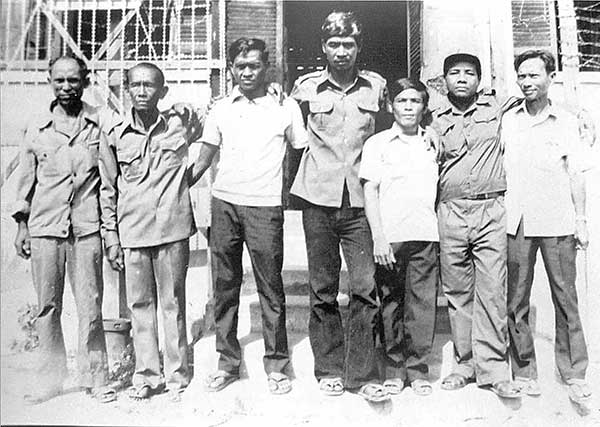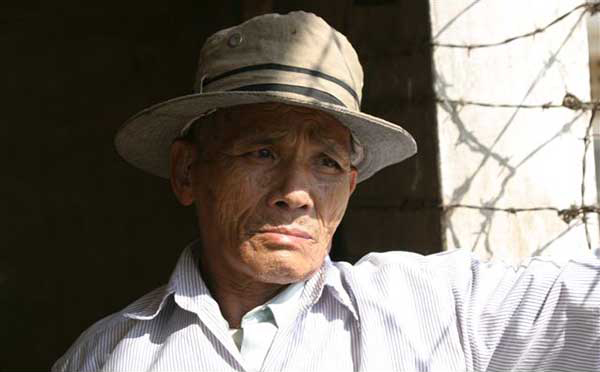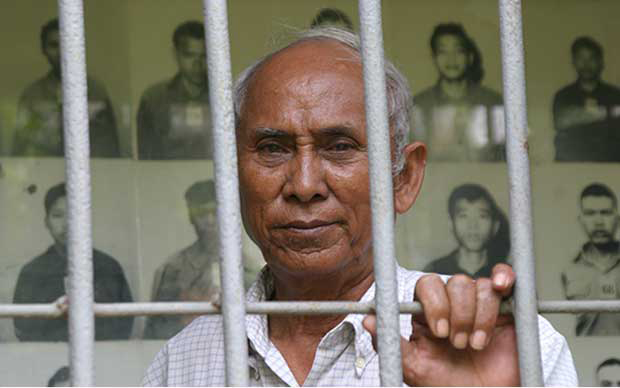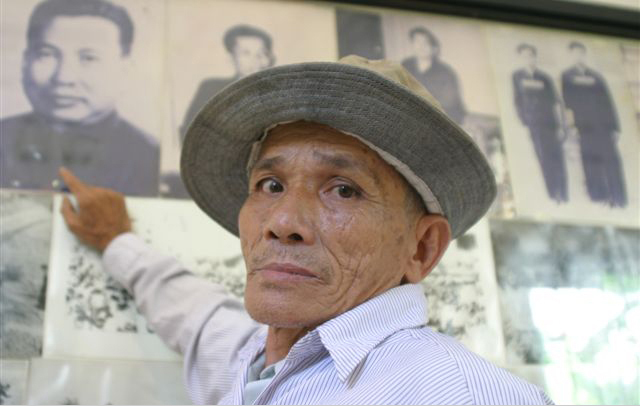Survivors speak: Trapped by their memories
PHNOM PENH, May 13, 2009 : Looking across the courtroom where he is on trial for crimes against humanity, the chief Khmer Rouge torturer cannot avoid seeing an artist and mechanic who sit together side by side, watching him but mostly avoiding his gaze.
One short and forceful, his feet dangling just above the floor, the other melancholy and drooping a bit, the men are rare survivors of the torture house he commanded, Tuol Sleng, where at least 14,000 people were sent to their deaths three decades ago.

In the weeks ahead, the two survivors will take the stand to testify against their torturer, Kaing Guek Eav, known as Duch, and both have terrible stories to tell about a place of horror from which almost no one emerged alive.
Bou Meng, 68, the short one, survived because he was a painter and was singled out from a row of shackled prisoners to produce portraits of the Khmer Rouge chief, Pol Pot.
The other, Chum Mey, 78, was a mechanic and was spared because the torturers needed him to repair machines including the typewriters used to record the confessions, very often false, that they extracted from prisoners like himself.
Mr. Bou Meng and Mr. Chum Mey are living exhibits from the Khmer Rouge years, tangible evidence like the skulls that have been preserved at some former killing fields, or like hundreds of portraits of their fellow prisoners that are displayed on the walls of Tuol Sleng.
The photographs were taken at the moment detainees were delivered to the prison, before they were stripped and fettered and tortured and sent to a killing field.

Those killed at Tuol Sleng are among two million people who died during the Communist Khmer Rouge regime from 1975 to 1979 from starvation, disease and overwork as well as from torture and execution.
Duch, now 66, is the first of five arrested Khmer Rouge figures to go on trial in the U.N.-backed tribunal.
He is accused of ordering the beatings, whippings, electric shocks and removal of toenails that Mr. Bou Meng and Mr. Chum Mey describe -- indeed he has admitted in the courtroom to ordering the beating of Mr. Chum Mey.
Both men endured torture that continued for days, and Mr. Chum Mey said, “At that time I wished I could die rather than survive.”
But both men did survive, and today they are describing scenes that very few of their fellow prisoners lived to recount.
“Every night I looked out at the moon,” Mr. Bou Meng recalled. “I heard people crying and sighing around the building. I heard people calling out, ‘Mother help me, mother help me!”’
It was at night that prisoners were trucked out to a killing field, and every night, he said, he feared that his moment had come. “But by midnight or 1 a.m. I realized that I would live another day.”

Though many Cambodians have tried to bury their traumatic memories, Mr. Bou Meng and Mr. Chum Mey have continued to return to the scene of their imprisonment and torture, as if their souls remain trapped there together with the souls of the dead.
During the first few years after the fall of the Khmer Rouge, Mr. Bou Meng returned to work in an office at Tuol Sleng, which was converted into a museum of genocide. Now he uses it as a convenient rest stop, spending the night there on a cot when he visits the capital, Phnom Penh, from the countryside, where he paints Buddhist murals in temples.
Mr. Chum Mey, retired now from his work as a mechanic, spends much of his time wandering among the portraits, telling and retelling his story to tourists and their guides, as if one of the victims on the walls had come to life.
An eager and passionate storyteller, he will show a visitor how he was shoved, blindfolded, up the stairs during 12 days of torture, and he will drop to the floor inside a small brick cubicle where he was held in chains.
“As you can see, this was my condition,” he said recently as he sat on the hard concrete floor holding up a metal ammunition box that was used as a toilet. “It upsets me to see Duch sitting in the courtroom talking with his lawyers as if he were a guest of the court.”
Apart from their survival, both men’s stories are similar to those of many Tuol Sleng prisoners — country people who joined the Communist revolution during the Indochina war to liberate their nation from what they saw as foreign domination.
They were swept up in Khmer Rouge purges, like many others in Tuol Sleng, and they were tortured until they admitted being members of the C.I.A. or K.G.B., organizations they had barely heard of.
Both men lost their wives and children in the Khmer Rouge years, and although both have rebuilt their families, the past still holds them in its grip.
Mr. Bou Meng does not wander like his friend among the Tuol Sleng pictures, but he does keep one in his wallet, a snapshot-sized reproduction of the portrait of his wife, Ma Yoeun, who was arrested together with him but did not survive.

The picture shows a small woman, dressed in black like the others, looking forlorn and lost, her hair tousled -- a record of the last time her husband saw her alive.
“Sometimes when I sit at home I look at the picture and everything seems fresh,” he said. “I think of the suffering she endured, and I wonder how long she stayed alive.”
The photograph reminds him of those most terrible moments of his life, but also of the happiest.
“We were still young, a boy and a girl together,” he said. “It’s my best memory. It was the day of our honeymoon. We slept together. It was a perfect day.”
Mr. Bou Meng has since remarried twice, but he remains shackled to his memories.
“I know I should forget her,” he said, “but I can’t.”
She visits him, he said, in visions that are something more than dreams, looking just as she did at that final moment, still 28 years old, leaving Mr. Bou Meng to live on and grow old without her.
Sometimes she appears together with the spirits of others who were killed, he said. They stand together, a crowd of ghosts in black, and she tells him, “Only you, Bou Meng, can find justice for us.”
Mr. Bou Meng said he hoped that the trial would cauterize his wounds, that testifying against Duch and seeing him convicted would free him from the restless ghosts and let him live what is left of his life in peace.
“I don’t want to be a victim,” Mr. Bou Meng said. “I want to be like everybody else, a normal person.”
But he said he knows that this may be asking too much of life.
“Maybe not completely normal,” he said. “But at least 50 percent.”
Copyright The New York Times